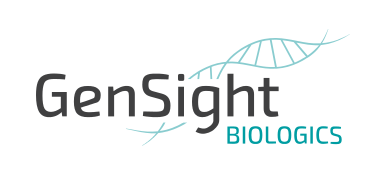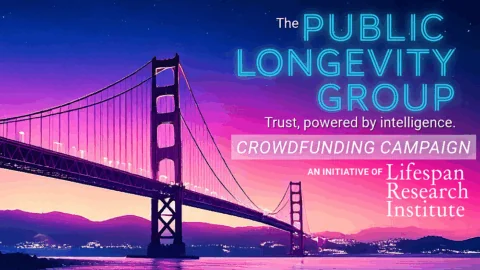
Organization Description
GenSight Biologics is a clinical-stage biotechnology company developing mitochondrial gene therapies for neurodegenerative retinal diseases and diseases of the central nervous system driven by mitochondrial mutations.
The London-based biotech company is developing platforms based on two core biotechnologies. Its platform technology for mitochondrial gene therapy is engineered Mitochondrial Targeting Sequences (MTS) that targets therapeutic mRNAs to ribosomes located at the mitochondrial surface for efficient delivery. The other is the harnessing of optogenetics by delivering a therapeutic gene whose protein confers light responsiveness to target cells, combined with goggles that boost the amount of light stimulation that reaches those cells.
Drug Development Pipeline
GenSight has two lead product candidates for the treatment of sight-threatening retinal degenerative diseases, together with products in preclinical development targeting other ophthalmic and neurodegenerative diseases.
LUMEVOQ (GS010/Lenadogene Nolparvovec)
GenSight Biologics is developing GS010, a gene therapy that replaces the mitochondrial gene ND4 when it is lost due to mutations. Mutations in ND4 can occur in aging, and congenital ND4 mitochondrial mutations that achieve dominance in retinal ganglion cells (RGCs) are one cause of Leber Hereditary Optic Neuropathy (LHON), a disease that causes acute or subacute loss of central vision.
GS010 expresses a modified ND4 transgene from the nucleus and shuttles the mRNA working copy to the mitochondrial surface to be translated. There, ND4 proteins are synthesized and imported into the mitochondria, where they integrate into Complex I of the respiratory chain, thereby rescuing the ability of the mitochondria to generate cellular energy (ATP). This “allotopic expression” approach is a key biotechnology for combating mitochondrial dysfunction, one of the hallmarks of aging.
Before the incorporation of GenSight or GS010’s original corporate vehicle Genethon, Lifespan Research Institute’s predecessor organization (the Methuselah Foundation) supported a preclinical proof-of-concept for allotopic ND4 in rats in the laboratory of Dr. Marisol Corral-Debrinski and GenSight cofounder Prof. José-Alain Sahel at the Institut de la Vision, Paris.
The company has taken GS010 into multiple clinical trials for LHON, beginning with the Phase I/II NCT02064569 trial, followed by the Phase III REFLECT (NCT03293524), REVERSE (NCT02652780), and RESCUE (NCT02652767) trials, and a long-term followup (NCT03406104).
In the first trial, subjects were treated with GS010 in a single eye, while the other eye was left untreated as a control. Unexpectedly, administering GS010 seemed to improve the function of the untreated eye along with the treated one, leading to a lack of difference between the experimental and control groups. Studies in cynomolgus monkeys and other animals suggest that this may have been due to “leakage” of the construct from the treated eye over to the untreated one, thus possibly making an effective therapy seem ineffectivw.
In December 2020, the GEN010 succeeded in the Phase III REVERSE clinical trial (NCT02652780), representing the moment when mitochondrial gene therapy became a reality in humans. The researchers report that by week 96 of the study, 25 participants showed a significant improvement in best corrected visual acuity (BCVA) in at least one eye compared to baseline. 29 of the 37 participants showed improved vision in both eyes. Eyes were about 3X more likely to regain 20/200 vision or better following treatment.
In June 2021, Gensight reported key efficacy and safety results at 78 weeks post-treatment in the REFLECT Phase 3 clinical trial for LUMEVOQ. The results showed greater BCVA improvement with bilateral intravitreal injections of the gene therapy than with a unilateral injection.
In September 2021, results from the long-term followup of the RESCUE and REVERSE Phase III clinical trials were published, which showed continued improvement in BCVA 2-3 years post-treatment.
In July 2021, GS010 was granted a Cohort Temporary Authorization for Use in France, and the company anticipated EU marketing authorization in H1 2022.
However, in March 2023, Gensight announced that an “operational issue” in the handling of the downstream process at its manufacturing partner Thermo Fisher Scientific had caused them to terminate the first of three GMP batches of GS010. The successful manufacture of three consecutive GMP batches of the drug at commercial scale is a necessary component of the regulatory dossier that was then under review by the European Medicines Agency (EMA) and eventually of a Biologics License Application (BLA) with FDA. The company stated that it expected to restart the three-batch “validation campaign” in May 2023, with results expected in Q3 of that year.
Despite that, in April 2023, Gensight announced that it had opted to withdraw its application ahead of a final opinion by the relevant EMA committee, based on the committee indicating that the data it had provided in oral explanation and its regulatory dossier would not be sufficient for them to give a positive recommendation for its marketing application. GenSight cofounder José-Alain Sahel expressed frustration that the “huge dataset of 252 ND4-LHON patients treated with LUMEVOQ showing that 70% of LUMEVOQ-treated patients present a visual recovery, in contrast to the poor and limited recovery observed in the natural history of the disease” was not deemed sufficient for EMA. CEO Bernard Gilly said that they would “continue to work with EMA to agree as soon as possible on a regulatory path forward.“
In September 2023, GenSight announced that their US manufacturing partner had successfully manufactured a GMP batch of the drug substance of GS010. GenSight stated that it intended to manufacture at least three commercial-scale GMP batches outside the context of a validation campaign to gain experience for its operating teams, generate process data for a future marketing application, and fulfill their needs for a possible new clinical trial and for the possible resumption of an early access program in Q1 2024.
In November 2024, GenSight announced that they had submitted an updated regulatory filing for GS010 to the French Agence Nationale de Sécurité du Médicament et des Produits de Santé (ANSM) in order to resume its early access (AAC) program there.
In June 2025, GenSight announced that ANSM had agreed to “consider expeditiously opening” their AAC program in France upon approval of a new dose-ranging clinical study. The company stated that it had submitted a preliminary design for such a study and that it expected to finalize the protocol in Q3 2025 and resume the AAC no later than Q4 2025.
In February 2025, GenSight announced the final results of the REFLECT trial. Five years after a one-time administration of GS010, LHON patients maintained their maximal improvement in visual acuity with no evidence of regression, and safety remained favorable. Patients who received treatment in both eyes were more likely to enjoy clinically relevant recovery than those who were only treated in one eye (75% vs. 60%).
In October 2025, GenSight announced that it had secured authorization from FDA for an Individual Patient Expanded Access (“compassionate use”) for GS010/LUMEVOQ in the United States, along with the required approval from the University of Pittsburgh School of Medicine (UPMC)‘s Institutional Review Board (IRB). This authorizes a physician to treat a single patient in the United States with LUMEVOQ outside of a clinical trial or a marketing license. The patient’s treatment is scheduled for November 2025.
In the same press release, GenSight reaffirmed that it is preparing to launch the pivotal Phase III RECOVER clinical trial of GS010 in the second half of 2026, “while engaging with the French medicines agency ANSM regarding a dose-ranging study the agency requested in connection with an Early Access Program (AAC) in France.” At the same time, the company continues to pursue opportunities to outlicense GS010 in markets beyond the US and EU and is exploring paid Early Access Programs worldwide.
The company also announced that it expected to complete the transfer of GS010 manufacturing to Catalent, a contract development and manufacturing organisation (CDMO), by the end of 2025. GenSight expects that Catalent will be able to produce enough new therapeutic material in 2026 to meet all of its needs for clinical trials and early access programs.
The company is also interested in using the same approach to treat other mitochondrial diseases, including having performed preclinical work in LHON driven by mutations in the ND1 mitochondrial gene.
GS030
GS030 is a unique combination of two parts. The first is a gene therapy that includes a gene for a light-sensitive protein. It’s delivered using a specially modified virus called AAV2 7m8. The second part is a pair of special goggles that stimulate the cells in the retina that have been altered by the gene therapy. The goggles project images onto your retina using a specific type of light. This approach, called optogenetics, involves inserting a gene for a light-sensitive protein into cells, which makes these cells respond to light.
GS030 uses a bio-engineered virus to put the gene of this light-sensitive protein into the target cells in the retina, known as retinal ganglion cells (RGCs). This makes these cells sensitive to light, regardless of the genetic mutation that caused their initial damage. However, these altered cells aren’t as light sensitive as normal cells in the retina, so regular vision in normal daylight probably won’t be possible without the special goggles. These goggles work by capturing visual information and boosting the light signal to the altered cells in the retina, allowing them to function more like normal cells. GS030 is being tested as a treatment for retinitis pigmentosa



